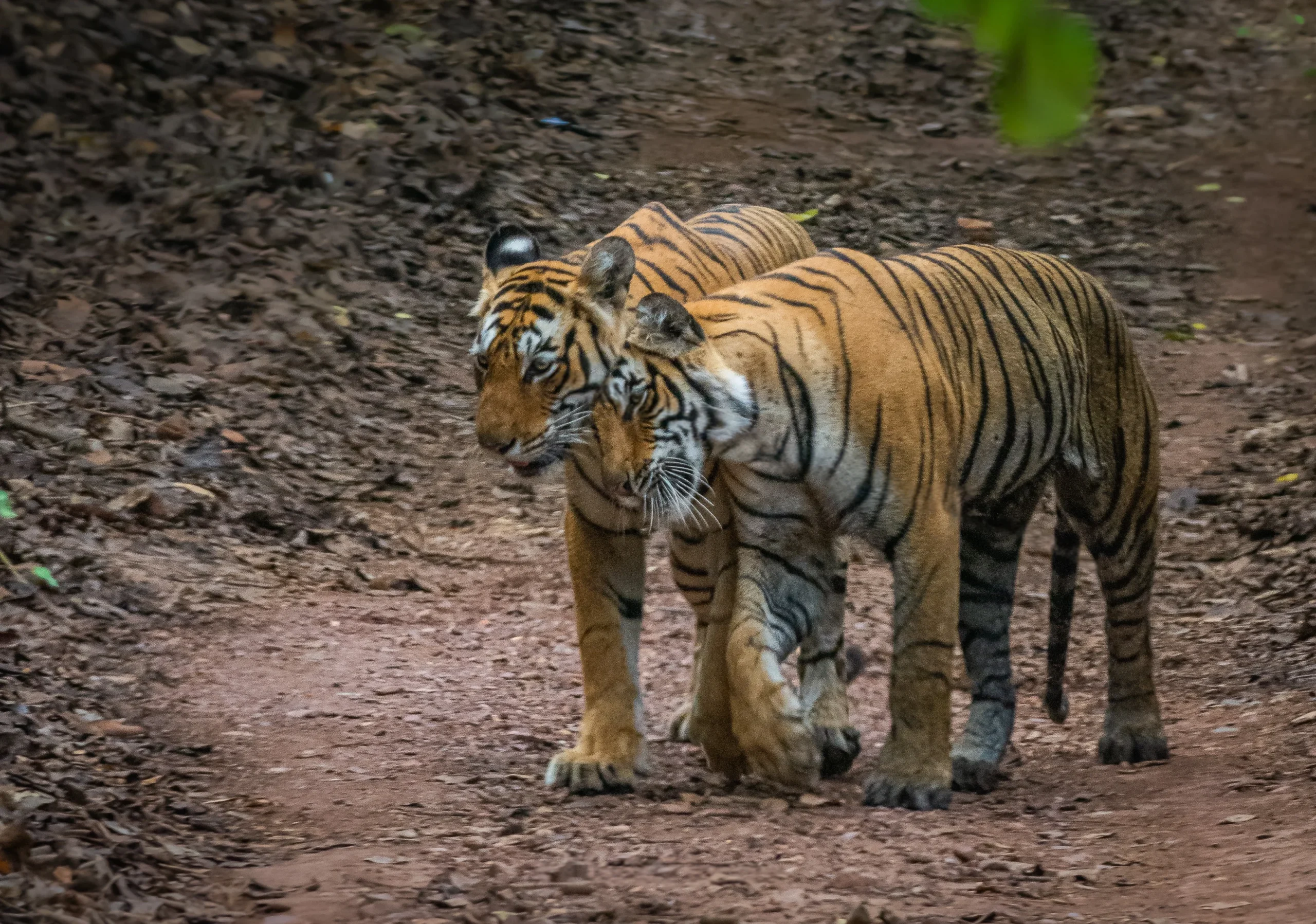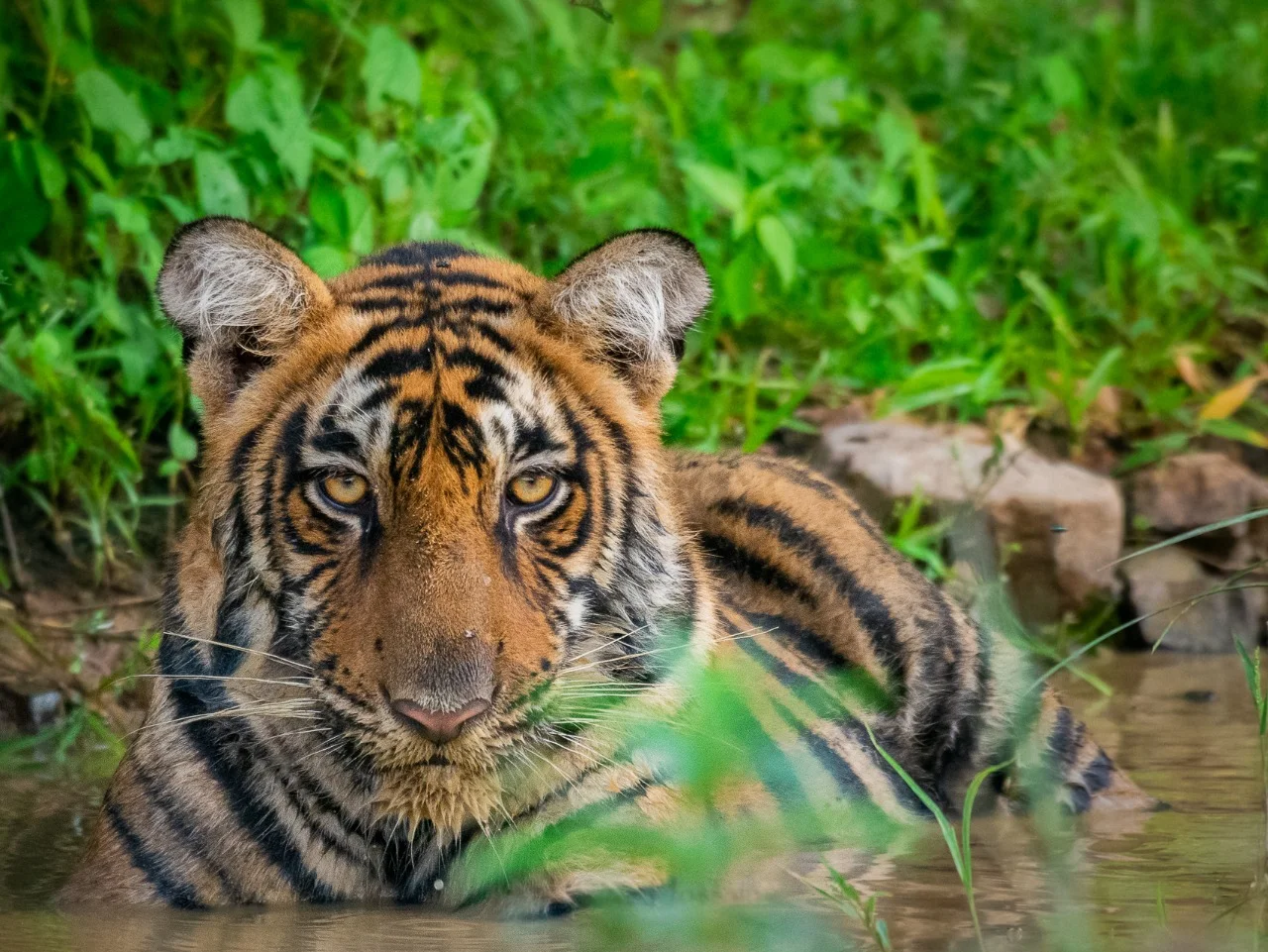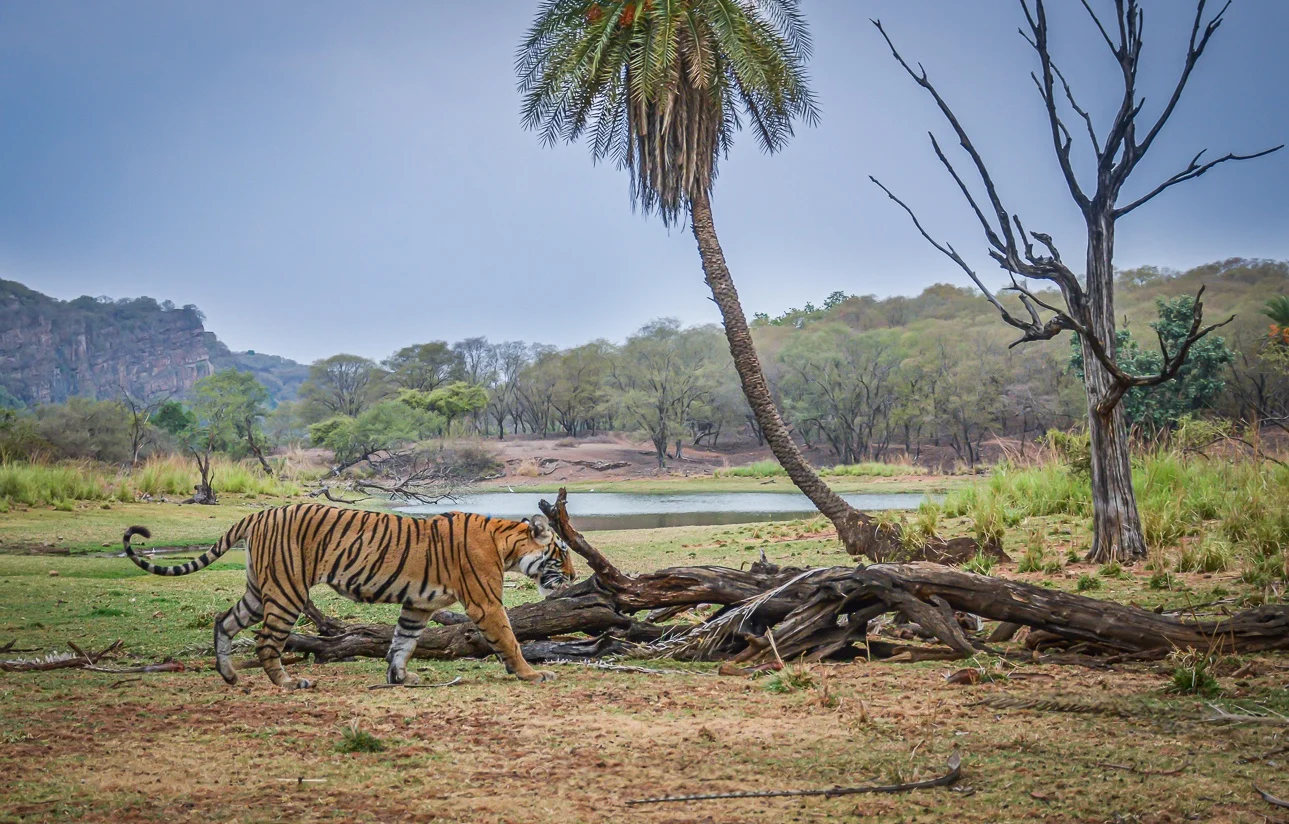Overview of Rathom Bar national park
The Rathom Bar national park is located near Sawai Madhopur in eastern Rajasthan, India, is one of the country’s most renowned wildlife reserves, especially famous for its population of Bengal tigers. Spanning over 392 sq. km in core area and extending beyond 1,300 sq. km with its surrounding sanctuaries, the park features a diverse landscape of dry deciduous forests, grassy meadows, rocky outcrops, and scenic lakes. Established as a tiger reserve under Project Tiger in 1973, Ranthambore is known for offering daytime tiger sightings, making it a top destination for wildlife enthusiasts and photographers. Apart from its rich fauna—leopards, sloth bears, hyenas, sambar, chital, nilgai, jackals, and over 300 bird species—the park is also home to the historic 10th-century Ranthambore Fort, a UNESCO World Heritage Site, and ancient temples like the Trinetra Ganesh Temple.

History of Rathom Bar national park
The history of Ranthambore National Park is deeply rooted in the legacy of Rajput royalty and conservation evolution in India. At the heart of the park lies the ancient Ranthambore Fort, built in the 10th century by the Chauhan dynasty and later ruled by various dynasties including the Delhi Sultanate and the Mughals. The fort served as a strategic stronghold and played a pivotal role in Rajasthan’s regional power struggles. For centuries, the surrounding forest was a royal hunting ground, especially under the rule of the Jaipur Maharajas, who used it as a private game reserve. After India’s independence, increasing concern over the dwindling tiger population led to the area being declared a wildlife sanctuary in 1955, and later upgraded to a Project Tiger reserve in 1973. It officially became a national park in 1980, marking a shift from royal hunting to wildlife preservation. The park’s transformation over the decades—from a battleground of kings to a haven for Bengal tigers—reflects India’s growing commitment to conserving its natural and cultural heritage.
Biodiversity
Flora
Ranthambore National Park boasts a rich and varied dry deciduous forest ecosystem, shaped by its arid climate and rocky terrain. The dominant tree species is the hardy Dhok tree (Anogeissus pendula), which covers much of the park and thrives in the dry conditions. Other common trees include banyan, peepal, neem, babul (Acacia), mango, jamun, and kadam, which provide shade and food for various wildlife. Along water bodies like lakes and streams, one can find clusters of palash (flame of the forest) and ber (Indian jujube). The park is also dotted with grasses, shrubs, and medicinal plants, supporting a complex food web. During the monsoon and post-monsoon seasons, the forest comes alive with lush greenery, flowering plants, and fresh shoots, making it a haven for herbivores and pollinators. Ranthambore’s flora not only sustains its diverse fauna, including deer, monkeys, and insects, but also contributes to the scenic charm of its rugged landscapes and ancient ruins.

Fauna
Ranthambore National Park is renowned for its rich and diverse faunal population, with the majestic Bengal tiger being the most iconic inhabitant. Unlike many other reserves, tigers here are often active during the day, offering visitors rare opportunities for sightings. Alongside tigers, the park is home to other formidable predators such as leopards, striped hyenas, jackals, and Indian foxes. Among the herbivores, species like sambar deer, chital (spotted deer), nilgai (blue bull), chinkara (Indian gazelle), and wild boar are commonly seen. The elusive sloth bear and the agile Indian pangolin also dwell in the dense underbrush, though they’re harder to spot. Ranthambore’s water bodies support mugger crocodiles, turtles, and various species of fish. Birdlife is equally impressive, with over 300 bird species, including crested serpent eagles, Indian grey hornbills, peacocks, kingfishers, storks, and vultures. This vibrant array of fauna, thriving amidst rugged terrain, lakes, and ruins, makes Ranthambore a truly captivating wildlife destination.

Jungle Safari in Rathom Bar national park
The jungle safari in Ranthambore National Park offers an exhilarating opportunity to explore one of India’s most famous tiger reserves. Safaris are conducted twice daily—morning and evening—in either 6-seater jeeps or 20-seater canters (open buses), accompanied by trained naturalists and guides. The park is divided into 10 safari zones, each with unique terrain, water bodies, and chances of wildlife sightings, especially the Bengal tiger, which is relatively active during daylight hours. Visitors often encounter a wide range of animals including leopards, deer, sloth bears, crocodiles, and various bird species. The safari trails wind through dense forest, ancient ruins, open grasslands, and serene lakes, providing not only wildlife experiences but also glimpses of the park’s scenic beauty and historic heritage. Safari bookings must be made in advance through official government or authorized portals, and each ride lasts approximately 3 to 3.5 hours. The best time for a safari is between October and March for pleasant weather, though summer safaris (April to June) often result in higher chances of tiger sightings near waterholes.
Types of Jungle Safari
Jeep Safari
- 6-seater open vehicle
- Ideal for small groups, photographers, and closer wildlife encounters
- More flexible and agile on rugged terrain
- Higher chances of spotting tigers in certain zones
Canter Safari
- 20-seater open bus
- Suitable for larger groups and more budget-friendly
- Covers similar routes as jeeps but with less flexibility
- Shared safari experience with other tourists

Half-Day Safari (Special Permit)
- Available for both jeep and canter
- Extended time inside the park (morning or afternoon half)
- Access to multiple zones instead of just one
Full-Day Safari (Special Permit)
- From sunrise to sunset
- More freedom to explore multiple zones
- Primarily for wildlife photographers, researchers, and serious enthusiasts
- Comes at a premium cos

Tatkal Safari (Last-Minute Booking)
- Limited slots, released 1 day in advance
- Available only in jeeps
- Higher fare but helps with last-minute plans

How to Reach Rathom Bar national park
Distance from Major Cities
Sawai Madhopur – 11 km (nearest town with railway station)
Jaipur – 160 km (approx. 3.5–4 hours by road)
Delhi – 390 km (approx. 7–8 hours by road / 5–6 hours by train)
Agra – 270 km (approx. 5–6 hours by road)
Udaipur – 430 km (approx. 7–8 hours by road)
Jodhpur – 450 km (approx. 8–9 hours by road)
Kota – 110 km (approx. 2–2.5 hours by road)
Ajmer – 260 km (approx. 5–6 hours by road)
Alwar – 300 km (approx. 6 hours by road)

Best Season to Visit Rathom Bar national park
The best time to experience Ranthambore National Park is between October and June, with March to June being ideal for tiger sightings near waterholes due to the summer heat. The park operates two jungle safaris daily—morning and evening—each lasting around 3 to 3.5 hours. Safaris are conducted in either 6-seater jeeps for a closer, flexible wildlife encounter or 20-seater canters for a more budget-friendly option, across 10 safari zones (Zones 1–5 in the core, Zones 6–10 in buffer areas). Morning safaris usually begin between 6:00 AM to 7:00 AM, and evening safaris start between 2:00 PM to 3:30 PM, depending on the season. Visitors can also book half-day, full-day, or Tatkal (last-minute) permits for a more extended or urgent adventure. Advance booking is essential, and carrying a valid government ID is mandatory at the entry gate. From daytime tiger sightings to scenic trails and historical ruins, a Ranthambore safari is a must for wildlife lovers and photographers alike.
